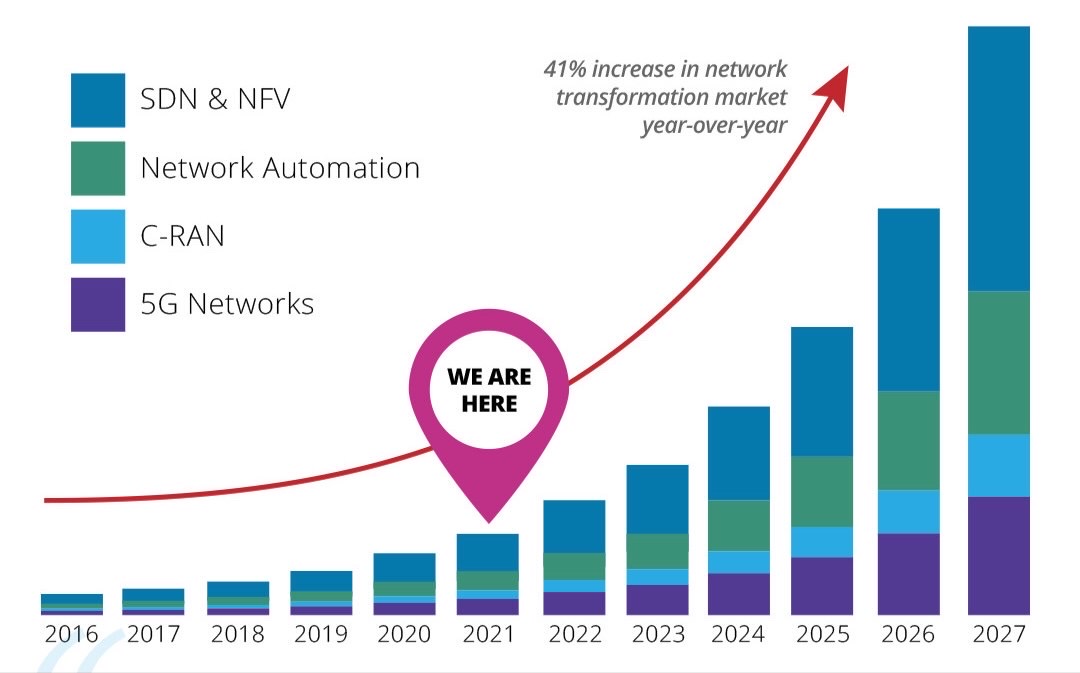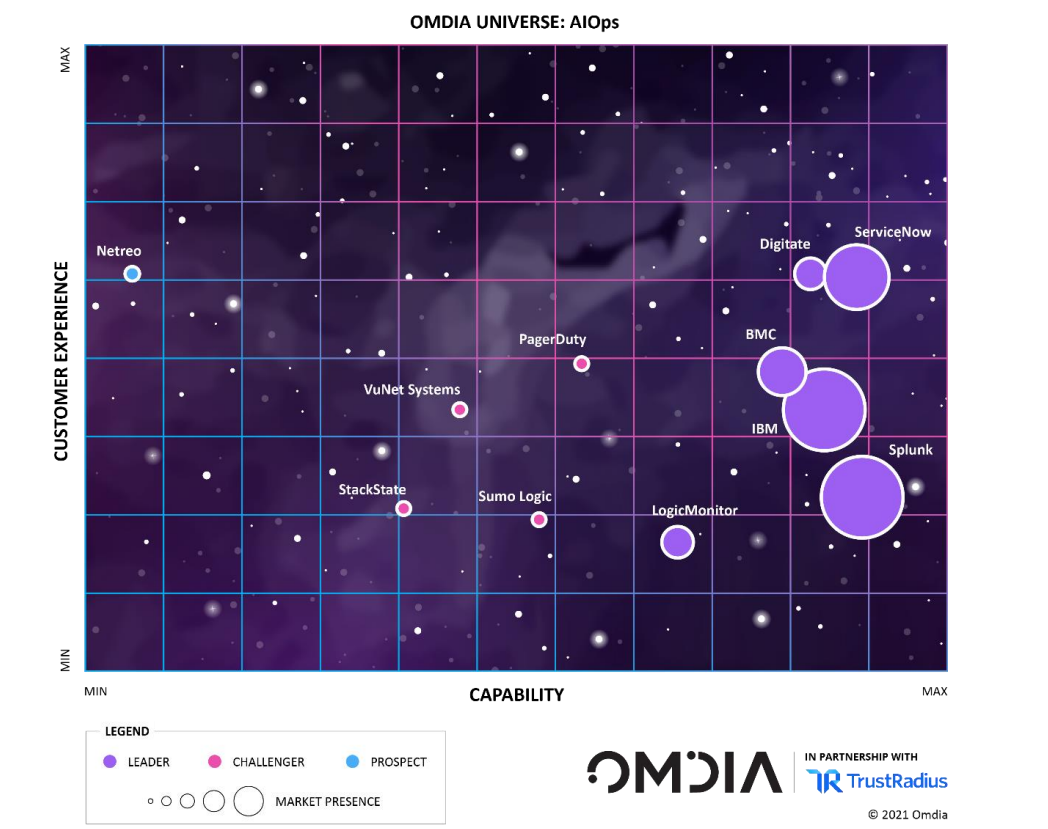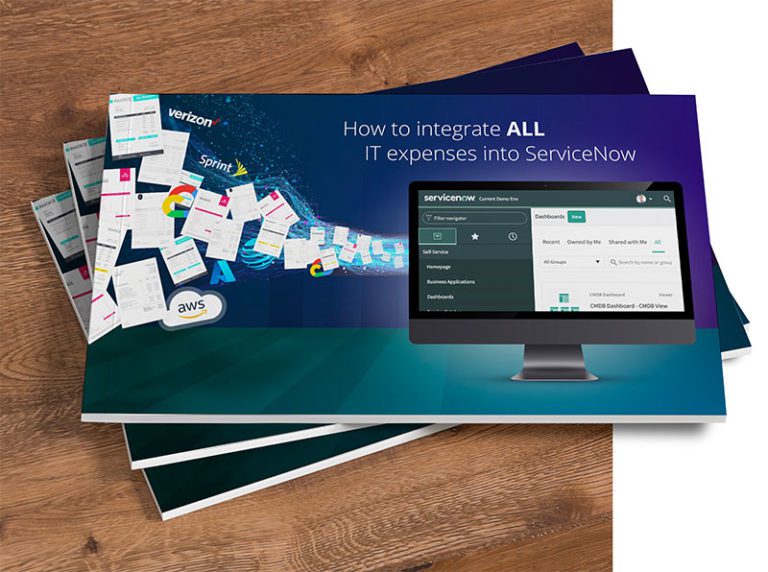Introduction to IT operations management
The spread of connected devices for IT teams to handle only continues to grow. And that’s not to mention cloud or emerging technologies like IoT, 5G, and more. The need to effectively manage this IT infrastructure has led to the rise of best practices and solutions for IT operations management. IT operations management (ITOM) allows an organization to control and maintain its IT infrastructure and applications on a continuous basis.
One of the key focuses of IT operations management is providing stable services to meet the organization’s needs. Whether that be keeping end-users connected through mobile devices, or making sure that cloud invoice gets paid every month.
For most enterprise organizations, IT operations management has become so complex that they look to tools like ServiceNow, BMC, or Atlassian to manage the provisioning, capacity, performance and availability of computing, networking, and application resources in addition to the overall quality, efficiency, and experience for end-users.
Key goals and functions of ITOM
Monitor and control of the network infrastructure
As organizations adopt a more dispersed workforce, ongoing network performance becomes even more crucial. And with cloud adoption continuing to skyrocket, ITOM leaders need the right tools to stay in control of the network infrastructure, including:
- Internal and external communication systems
- Remote access
- Server and storage management
- Port management
- Monitoring resources
- Maintaining security

Management and delivery of the organizations approved devices
For many organizations, a worker without access to their devices and applications simply can’t perform their role. It is critical that end users have access to the tools they need and ITOM processes make that possible. This includes the provisioning of IT assets from laptops to desktops, mobile devices, and more.
We recommend looking for an ITOM solution that gives you increased visibility and centralized control over the variety of devices in your IT landscape. Such a tool should allow you to support any device, running any OS, in any location, at any time.
Helpdesk support for request fulfillment and incident response
Ongoing support of a complex IT infrastructure is necessarily going to create an influx of helpdesk support requests. The key here is creating automated processes that can address the overwhelming amount of simple fixes so your end users have the support they need and your IT teams can stay focused on more important tasks. This ensures a smooth system without losses in efficiency because of misused resources.
Additionally, consider ITOM solutions that can manage common activities such as scheduling and managing backups, setting user-profiles and system permissions, implementing and managing the organization’s disaster recovery plan.
IT operations management challenges
New technologies like cloud-based computing services (SaaS, PaaS, IaaS, etc.), virtualization, and the Internet of Things (IoT), mean new challenges for IT organizations. As organizations expand their IT infrastructure, they must also adapt their operations management processes to overcome challenges and satisfy the performance, security, and cost-control demands of the business.
Technology and systems that don’t communicate with each other
As a direct result of the organic growth of most IT infrastructures, there are often huge disconnects between disparate technologies and systems. This disconnect often necessitates spreadsheets and other manual processes just to try and form a clear picture of assets under management. This is exacerbated by organizations that have some applications deployed on-premise, some applications provided through a SaaS provider, other applications hosted by an IaaS provider, and the list goes on. Manually connecting the hundreds, or thousands of systems in use is just not possible and the resulting fog of confusion on IT assets and spending makes control impossible.
Limited visibility of IT assets and services
There are a couple of key categories here. The ability to effectively allocate spending and resources across departments and initiatives. And second, the ability to respond to operational and security issues. IT Ops teams need visibility into their IT architecture. Organizations that are cobbling together data from across legacy software systems with traditional on-premise architectures likely don’t have the visibility they need to make informed decisions about IT spending. With information dispersed across systems, software, and team members, IT leaders often lack the necessary tools and oversight to deliver on business objectives.
Difficulty scaling and securing
A lack of visibility and control over increasingly disconnected technology often means that IT operations can be incredibly difficult to scale when new services must be introduced and maintained. This leads to dangerous practices like shadow IT and more. This can result in a fractured IT infrastructure with poor oversight and increased security vulnerability. And with the cost of a data breach over $4 million dollars, IT leaders need secure solutions now.
The role of AIOps
It can feel like AI is just a buzzword these days, but with the incredible amount of data created by connected IT infrastructure, AI has a distinct advantage in IT operations management. According to IBM, “AIOps uses artificial intelligence to simplify IT operations management and accelerate and automate problem resolution in complex modern IT environments.” – https://www.ibm.com/cloud/learn/aiops
The critical takeaway here is that AI allows organizations to be proactive with operations management. It’s no surprise then that the market for AIOps solutions has matured over the past decade to provide a broad and deep perspective of the IT environment. Leading researcher, Omdia recently released their vendor comparison survey to help business managers select the AIOps solution that provides the capabilities they require and helps them achieve digital transformation.
Graph from Omdia Selecting an AIOps Solution 2021-22

Omdia says, “ServiceNow should appear on your shortlist if you are looking for a business-focused approach to transforming how IT is managed… ServiceNow’s strengths in ITSM and ITOM and the fact it is built on a single common platform enable it to gather and correlate all the traditional data sources needed for performance monitoring.”
Why natively integrating your IT invoices with your assets in ServiceNow matters
As we’ve already seen, disconnected systems and technologies create a snowball effect of problems. The same problems show up when IT leaders have to rely on different tools for IT invoice optimization and ITOM process delivery. For organizations that leverage ServiceNow for ITOM, brightfin delivers a unique value add.
[2:30 video] The value of integrating IT invoice data with ITSM data
brightfin is TEM + ITFM + Services natively built on ServiceNow.
Traditionally, a TEM imports and optimizes IT invoices for different categories like mobile, fixed, and cloud. But each of those IT categories has their own complexities, and many times that leads to organizations using different platforms to process each IT category. brightfin is the ONLY TEM provider that stores all of your IT invoice data inside of ServiceNow, which solves a lot of problems.
- First, optimizing IT invoices saves you a ton of money
- By connecting data in the same system, you can see spend consolidated in dashboards
- You can then easily allocate by location, project, or department
- Out of the box workflows and self service portals make adoption simple
- And we layer key services like audits, procurement, deployment, billy pay, and more





